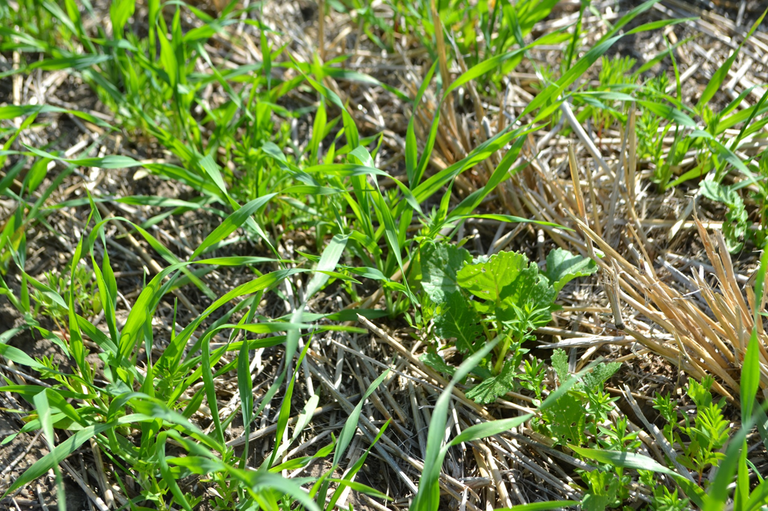Timing of Cover Crop Establishment
The interest in planting cover crops has recently increased in North Dakota. The traditional method for seeding is to do so after a small grain crop. However, with our short growing season, the window to successfully establish a cover crop is limited. Most years, adequate moisture for germination is available for only a few days after combining the small grain crop. If seeding later than this, germination of the cover crop is determined by the next adequate rainfall event, which may be days or weeks after harvest. Delayed germination drastically reduces the amount of biomass produced by the cover crop. Because labor is likely in short supply for most farms, combining and seeding at the same time can be challenging. This lead us to ask the question: Where are the opportunities within the growing season to successfully establish a cover crop without impacting grain yield of the cash crop and not significantly increasing production costs?
A cover crop trial was conducted at the CREC as well as the Langdon, North Central, Central Grasslands, and Hettinger RECs, and the Oakes Irrigation Center. The objective was to assess the influence of planting time on cover crop establishment and performance in a barley cash crop.

Cover Crop mix seeded with barley crop.
The cover crop consisted of a mixture of turnips, radishes, lentils, and flax with the timings of establishment as follows:
- Check (no cover crop seeded)
- At seeding with the drill (in the same seed tubes as the barley)
- 4-5 leaf barley (broadcast seeded at herbicide application timing)
- Anthesis (broadcast seeded at fungicide application timing)
- After harvest with a drill (traditional timing and method)
Below are the combined results from the three locations that were not severely impacted by drought (produced a harvestable grain crop): Carrington, Langdon, and North Central.
- In 2015, sufficient timely rains occurred after each cover crop seeding therefore all of the before harvest seeding timings produced significantly more biomass than the check and after harvest treatments.
- In 2016, there was an early dry spring with little significant rainfall after seeding and the good barley crop was raised on adequate subsoil moisture. This lack of rain impacted cover crop establishment and growth of all timings with none being significantly better than others.
- In 2017, again there was little significant rainfall after seeding. However, there was adequate moisture at seeding to successfully establish the cover crop then and raise a respectable grain crop.
These are preliminary results that suggest there is no significant impact on barley yield regardless of when this cover crop mix was established. Moisture will determine if and when the cover crop is successfully established. Data from additional years will be needed to determine which treatments may become acceptable practices for crop insurance in different areas of the state. If have any questions or would like additional information contact Ezra.Aberle@ndsu.edu or 701-652-2951.
Ezra Aberle
Ezra.Aberle@ndsu.edu
Agronomy Research Specialist


